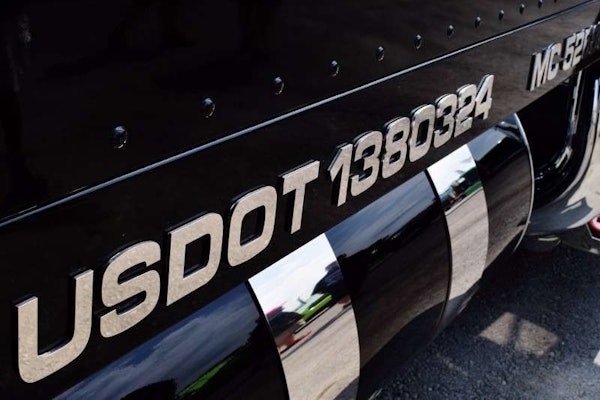If someone asked you how much it cost you to run your truck last year, would you have to spend hours rummaging through receipts and adding them up? Even if you knew it cost $43,569, would you know how much it differed from the year before? What caused the increase or decline? This kind of information comes from keeping tabs on your cost per mile.
If you don’t know your CPM, you don’t know whether you made money on your last load, and you don’t know what your next load ought to pay, either. You don’t know which expenses are urgent problems and which ones you can take in stride. Tracking CPM is as necessary as putting fuel in your tank.
“It’s just something you do, like breathing,” says 15-year owner-operator Randy Richesin of Sweetwater, Tenn. “When I am a leased owner-operator, I have to know my CPM to make sure my business is turning a profit. When I’m running under my own authority, I also have to know my per-mile cost in order to know how much to charge for my services.”
Sure, an accountant can give you a monthly or quarterly financial report, but that profit-and-loss report doesn’t give you the information you need to analyze your operation. CPM is more useful because it is the basic unit of measure for truckers.
“It’s the best way to compare business period to business period, and it’s a better way to compare yourself to other owner-operators,” says Tom Sonricker, president of Transport Business Solutions LLC in Kernersville, N.C. “It’s something we preach all the time to all our clients.”
The hardest part of computing CPM is pulling out receipts and estimating those costs you don’t have a record for. It’s essential to include every trucking-related expense. Of course, you’ll miss a few now and then, such as the 50 cents for an occasional USA Today. The formula is simple: CPM equals your costs (fixed and variable) divided by the number of miles run. Let’s take a closer look at these elements.
Fixed costs. These include your truck payment, insurance, licensing and registration, and taxes. Knowing your fixed costs will help you evaluate when it’s prudent to run with a lower paying load, which has no effect on fixed costs, or to sit and wait for a higher-paying load.
Variable costs. The more miles you run, the higher your variable costs will be. These include fuel, tires, maintenance and repairs. Variable CPM should stay fairly constant unless something unusual happens, such as a fuel price spike or a high repair bill.
Miles. This should include every mile, even deadhead. Empty loads are part of your business, too.
It’s best to calculate CPM on a monthly basis. For annual expenses, such as insurance and licenses, divide the total by 12.
If you’ve never tracked your CPM before, take your 2000 Schedule C expenses and divide your total expenses by the number of miles you ran in 2000. That won’t be as accurate as logging every expense as you go and developing your CPM from scratch, but it will give you an estimate.
Let’s say your total CPM is 66 cents, but six months from now, your CPM increases to 71 cents. Why did your costs increase? Maybe you bought a set of tires or a generator or had new injectors installed. As long as you can explain the increase and it was necessary for the operation of your business, you can evaluate how serious the development is. What if you can’t explain it? It could be hidden in increased fuel costs. Maybe you’ve been idling excessively. Your engine might need an overhaul. By knowing your CPM, you have a valuable tool to help you make better decisions.
For example, buying a new truck raises fixed costs (truck payment and insurance) but lowers variable costs (maintenance and fuel). You can use your CPM to see whether the lower variable costs are enough to offset the higher fixed costs of a new truck.
“No business can operate without knowing the bottom line and the profit margin,” says carrier owner Scott Elgin of Home, Pa., who thinks CPM is so important he wrote a how-to book, Cost Per Mile. Owner-operators who don’t know their CPM “get weeded out sooner or later, and it’s a shame,” Elgin says, “because there are a lot of hard-working people out there who could be successful if they just had this basic information.”
Monthly fixed costs
· Truck payment $1,550
· Insurance $475
· Federal use tax $45
· License fees and permits $100
· Income tax $685
· Clothes $50
· Worker’s comp $175
· Accounting fees $125
Total fixed costs $3,205
Monthly variable costs
· Fuel $2,080
· Maintenance $125
· Repairs $325
· Meals $350
· Tolls $35
· Tires $455
Total variable $3,370
Fixed costs $3,205
Variable costs +$3,370
Total costs $6,575
$6,575/10,000 miles = 66 cents per mile
Good load or bad? CPM can tell you.
What might seem like a good load could turn out to be a loser. If you know your CPM is 65 cents, you’ll know at a glance that a load paying $1.10 a mile will net you 45 cents a mile.
You can also evaluate leasing opportunities. If you know a company’s per-mile rate, you can tell whether your net pay will be enough for you to live on.
Of course, if you use per-mile accounting, your revenue should be expressed in cents per mile also. If you work on a percentage, you must convert that into revenue per mile. If your lease calls for 70 percent of the freight bill revenue and you have a load going from Chicago to Los Angeles that pays the carrier $4,500, $3,150 will be paid to the truck ($4,500 X .70). Based on that 2,034-mile-trip, your revenue per mile will be $1.55 ($3,150






